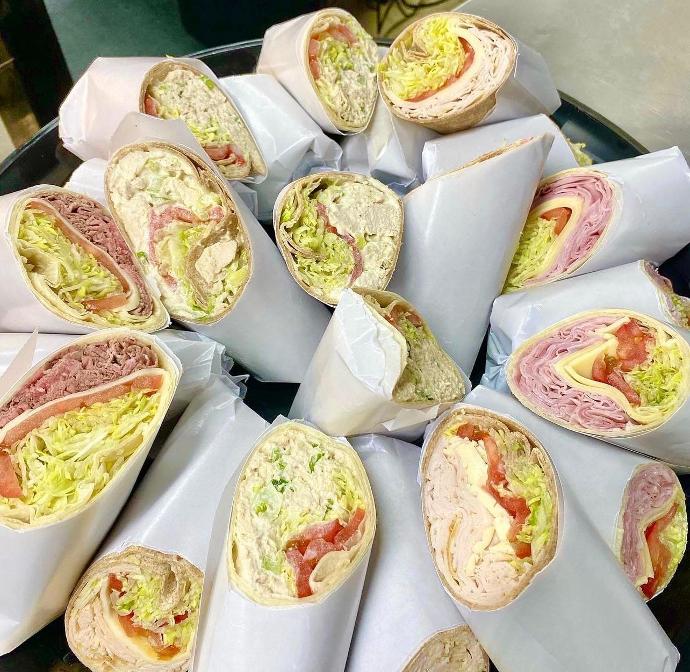
Wet wax and dry wax are the two main types of waxed paper in food packaging. Understanding their differences and their appropriate applications is essential to providing a quality product to our customers. Wet wax paper is excellent for greasy, oily, or wet foods but NOT for hot foods. Dry wax paper is more appropriate for hot foods, bakery products, or interleaving between foods to prevent sticking. The reasons for these differences lie in the actual production process of the wax paper.
Wet Wax
Wet wax paper is manufactured by running a roll of paper through a wax bath to create a wax coating on top of the paper. It is then run through a roller to cool, remove excess wax, and make a smooth, shiny finish. Depending on the manufacturer and their specific process, the wax used on wet wax paper is heated to approximately 150 degrees Fahrenheit. Let's put that all together: the wax is on top of the paper and melts around 150 degrees. While that’s perfect for an Italian hero with lots of dressing, it is unsuitable for a hot Chicken Parmesan hero because the wax can melt into the food. Wax on top. Wax melts.
Dry Wax
Dry wax paper is produced using a similar process but with very different results. When manufacturing dry wax paper, the wax is hotter. The rollers compress the paper, forcing the wax into the paper itself. Therefore, the wax is embedded in the paper, not sitting on top of the paper. This process makes dry waxed paper better for hot foods, like egg sandwiches or the previously mentioned Chicken Parm hero. It also makes it less expensive because wax paper is sold by weight, and there is less wax and more paper sheets or feet per product. However, if a food is exceptionally moist or has a lot of oil, that can bleed through dry wax. (At this point, you might ask yourself, “What if I have a hot food that has a lot of sauce?” Fear not! Read on to the end.)
Okay, now that we know WHY they’re different, how can we tell by looking at a piece of paper? Wax paper identification is the easy part; wet wax paper is shiny, has a “wet” look and a waxy feel. Also, it is challenging to write on short of using an indelible marker like a Sharpie. Dry wax is not shiny and has a mottled look to it, where you can see the wax embedded into the fibers of the paper, making parts of the paper have a slightly different color. Dry wax can be written on.
So, what about a hot sandwich that is filled with sloppy goodness that drips down your chin? It’s hot; wet wax is a no, and it has a lot of moisture so dry wax wouldn’t be great either. In cases like this, we have to move away from wax paper entirely.
Take a look at this blog post for more deets.

Contact us
Hunting for service that's crazier than a squirrel in a coffee shop and a truck as bold as a banana? Drop your deets in this snappy form and let's roll toward first-rate paper goodies!
Price paper company
379 North main st.
Freeport, New York 11520
1-844-YELLOW-T
516-378-7842
631-405-5025
Fax: 516-378-7995
